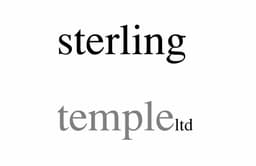London Hall 3 Floors Point Cloud
Generative AI & Computer Vision
Tags and Keywords
Trusted By




"No reviews yet"
£200
About
This dataset contains a high-precision 3D point cloud captured from a furnished community hall in central London using professional LiDAR scanning equipment. The scan provides detailed spatial information of a multi-floor community hall environment including furniture, fixtures, and architectural elements.
Captured by professional measured surveyors, this dataset offers real-world commercial building complexity ideal for training computer vision models, autonomous robot navigation systems, and spatial AI applications. The point cloud includes survey-grade accuracy throughout the scanned area.
Perfect for companies developing indoor navigation algorithms, construction AI systems, digital twin applications, and robotics path planning solutions requiring authentic UK commercial building data.
Dataset Features
• Point Coordinates (X,Y,Z): 3D spatial coordinates for each scanned point with millimeter precision
• Intensity Values: LiDAR return intensity data for material classification and surface analysis
Distribution
Data Volume: Approximately 15-50 million points depending on scan density settings
File Formats: Available in .las, .e57, .xyz, and .ply formats
File Size: 200MB - 2GB depending on format and compression
Coverage Area: ~200-1,000 square meters of office space across multiple floors
Point Density: 5-10mm point spacing typical
Usage
This dataset is ideal for a variety of applications:
Autonomous Robot Navigation: Training indoor navigation algorithms for commercial office environments, obstacle detection, and path planning systems.
Computer Vision Research: Developing 3D object recognition, spatial understanding, and scene segmentation models for built environments.
Construction AI & Digital Twins: Building information modeling automation, progress monitoring systems, and facility management applications.
Spatial AI Development: Training models for indoor positioning, room layout understanding, and architectural element detection.
Academic Research: Supporting research in robotics, computer vision, and spatial intelligence applications.
License
Proprietary
Who Can Use It
List examples of intended users and their use cases:
- Data Scientists: For training machine learning models.
- Researchers: For academic or scientific studies.
- Businesses: For analysis, insights, or AI development.
Loading...
